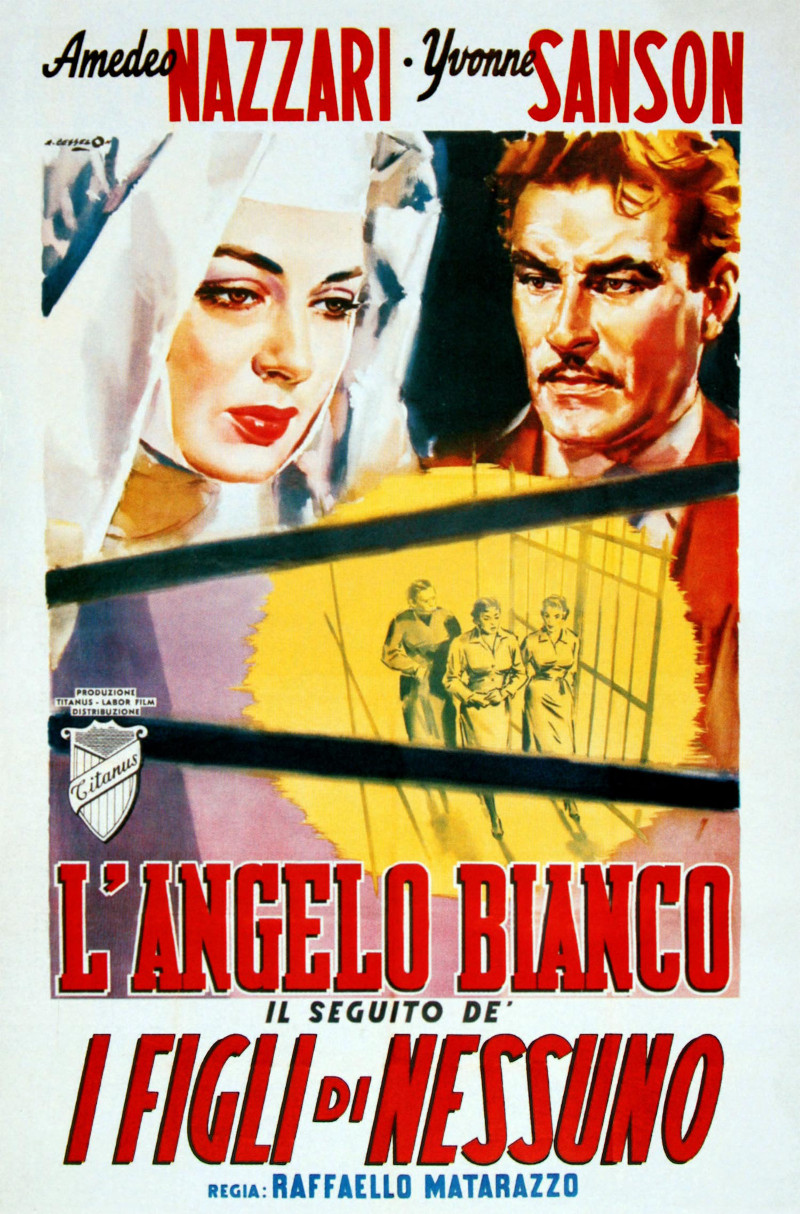The white Angel picks up where I figli di nessuno left off. Four years separated the two films, during which time Matarazzo directed another seven films, two of which were in collaboration with the infallible team of Nazzari and Sanson. However, that is of little importance, as time passes but the classics are never forgotten. And if they do get confused in your memory, it only increases the feeling of vertigo. Not by chance have we chosen the word vertigo, as it is the title of the Alfred Hitchcock film released three years later, and it is impossible not to mention the similarities between Vertigo and L’angelo bianco. They both contain the same (erotic) obsession for the love interest, who comes back in the form of a double. With great talent, Yvonne Sanson plays two parts: a nun and a music hall dancer, the two souls of this popular melodrama that are reflections of one another: redeemer and sinner. It is incredible how Matarazzo, with sets that seem to reflect the economy of means available to him, was able to give us such a dense, complex and tortuous film, spiralling to the point that we lose all sense of time.
Guido cannot forgive his wife, Elena, for the harm she caused to him and his son in Figli di nessuno. He asks for a divorce. She runs away with her daughter, but they both disappear in a shipwreck. Guido meets a dancer, Lina, on a train. She is a dead ringer for Luisa, the woman he had loved, who gave him a son who died tragically, and who took religious vows and became Sister Addolorata. Guido and Lina spend time together and she becomes pregnant. She ends up in prison for trafficking counterfeit money. She is badly beaten by other inmates, but manages to give birth to their son. Guido marries her in prison on the same day that a riot breaks out and some prisoners try to escape. Lina dies and the rioting prisoners take the baby. Only Sister Addolorata is able to return the child to the arms of his father.
The white Angel picks up where I figli di nessuno left off. Four years separated the two films, during which time Matarazzo directed another seven films, two of which were in collaboration with the infallible team of Nazzari and Sanson. However, that is of little importance, as time passes but the classics are never forgotten. And if they do get confused in your memory, it only increases the feeling of vertigo. Not by chance have we chosen the word vertigo, as it is the title of the Alfred Hitchcock film released three years later, and it is impossible not to mention the similarities between Vertigo and L’angelo bianco. They both contain the same (erotic) obsession for the love interest, who comes back in the form of a double. With great talent, Yvonne Sanson plays two parts: a nun and a music hall dancer, the two souls of this popular melodrama that are reflections of one another: redeemer and sinner. It is incredible how Matarazzo, with sets that seem to reflect the economy of means available to him, was able to give us such a dense, complex and tortuous film, spiralling to the point that we lose all sense of time.
Guido cannot forgive his wife, Elena, for the harm she caused to him and his son in Figli di nessuno. He asks for a divorce. She runs away with her daughter, but they both disappear in a shipwreck. Guido meets a dancer, Lina, on a train. She is a dead ringer for Luisa, the woman he had loved, who gave him a son who died tragically, and who took religious vows and became Sister Addolorata. Guido and Lina spend time together and she becomes pregnant. She ends up in prison for trafficking counterfeit money. She is badly beaten by other inmates, but manages to give birth to their son. Guido marries her in prison on the same day that a riot breaks out and some prisoners try to escape. Lina dies and the rioting prisoners take the baby. Only Sister Addolorata is able to return the child to the arms of his father.
